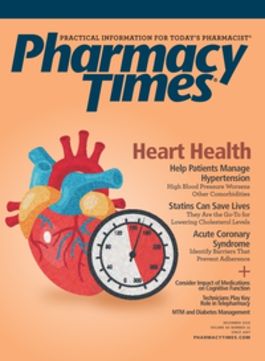Publication
Article
Pharmacy Times
HHS Report Acknowledges Pharmacy’s Role in Advancing Hypertension Control
Author(s):
Key Takeaways
- Pharmacists are recognized as crucial members of the hypertension care team, especially for underserved populations.
- Community pharmacies play a unique role in improving hypertension control and supporting patients nationwide.
The NACDS said that individuals facing chronic disease states are often medically underserved and suffer from disparities within the health care system.
Following the US Department of Health & Human Services’ release of The Surgeon General’s Call to Action to Control Hypertension, which acknowledges pharmacists as integral members of the hypertension care team, the National Association of Chain Drug Stores (NACDS) released a statement on the importance of
this report in continuing the momentum of recognizing the role of pharmacists in the battle against chronic diseases.
The report acknowledges community pharmacies’ and pharmacists’ critical and unique roles in improving hypertension control and supporting patients throughout the country. Additionally, the NACDS said that individuals facing these chronic disease states are often medically underserved and suffer from disparities within the health care system.
“Including pharmacists in community-based efforts to improve hypertension control among underserved populations through active medication management has also proved promising and could be implemented in an alternative-care model to enhance traditional primary care,” the authors of the report wrote.
The report also notes the accessibility of pharmacies in communities where patients working to control hypertension may lack access to services outside the pharmacy. This places community pharmacists in a position to deliver crucial preventive services and effectively address hypertension-related health disparities.
REFERENCE
NACDS lauds HHS report recognizing pharmacy’s role in advancing hypertension control.National Association of Chain Drug Stores. October 8, 2020. Accessed October 9, 2020. https://www.nacds.org/news/nacds-lauds-hhs-report-recognizing-pharmacys-role-in-advancing-hypertension-control/







